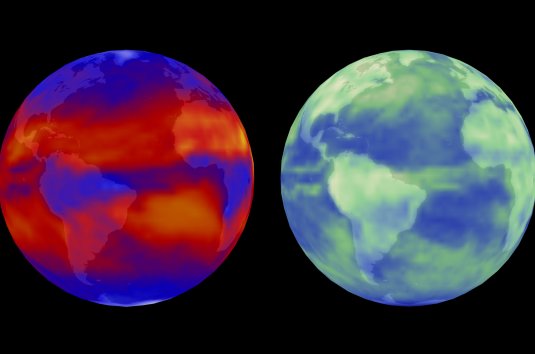
Geoengineering: finding a voice for humanitarians

20 August 2013
Geoengineering – the intentional manipulation of the global climate with techniques like dispersing sulphur particles in the upper atmosphere to deflect sunlight and cool the planet – raises two key questions from the humanitarian perspective:
* Will vulnerable people worldwide have a voice in geoengineering decisions?
* Will there be extra funding for humanitarian work in a geoengineered future?
The probable answer to both is no.
These are among the conclusions of a new working paper, Geoengineering and the humanitarian challenge, that is part of a series exploring the “ethics, politics and governance of climate engineering”, just published by a special coalition of scientific agencies.
Its authors are Janot Mendler de Suarez of the Boston University Pardee Center for the Study of the Longer-Range Future, and Bidisha Banerjee and Dr Pablo Suarez of the Climate Centre.
Externalities
They suggest three core strategies to address the challenges represented by geoengineering: learning, preparing and preventing.
These would be intended to help redirect what may be geoengineering’s “externalities” – its costs to people who did not elect to be part of it.
The paper argues that “we should…identify the subsistence farmer’s likely costs due to crop failure as a result of solar radiation management (SRM) and research these costs as much as benefits such as climate stabilization are researched” by developed nations.
In the “preparing” phase, if the risk of negative consequences is deemed high, subsistence farmers should be supported in reducing likely costs such as crop failure – a suggestion the paper says is particularly directed at policy-makers and the humanitarian sector.
In “preventing”, mechanisms need to be established that either prevent costs being successfully transferred as externalities altogether and/or internalize them to those enjoying benefits from geoengineering.
‘Realistically pessimistic’
“We are very concerned that as humanitarians, the Red Cross Red Crescent, the UN system, Oxfam and many others will have to change the nature of their work in a geoengineered planet,” Dr Suarez said in a panel discussion with Jeff Tollefson, US correspondent of Nature magazine, held to coincide with the launch the working paper.
“And we just won’t have what it takes.”
Describing himself as “realistically pessimistic” about geoengineering, Dr Suarez – Climate Centre Associate Director for Research and Innovation – said past experience suggested that “when things can go wrong for a group, actions taken by some to deal with the likely shock protects them at the expense of the others.”
The authors argue that disproportionate impacts on the more vulnerable are “highly probable” in a geoengineered climate.
If decisions are made to deploy SRM for the benefit of some people in the world while causing others to suffer, this would represent a humanitarian “externality” and must be addressed as such.
The Climate Centre’s involvement with the rapidly expanding topic of geoengineering, detailed in its 2012 annual report, included several presentations, as well as engagement with global thinking such as follow-up to reports by the UK Royal Society and the 2010 Asilomar International Conference on Climate Intervention Technologies.
Library photo at left shows heat given off by the Earth’s surface and at right sunlight is reflected back out to space by oceans, land, clouds and aerosols. Scientists have yet to understand how geoengineering might negatively impact vulnerable people.
(Photo: Tom Bridgman/NASA-Goddard Space Flight Center
Scientific Visualization Studio)
(Photo: Tom Bridgman/NASA-Goddard Space Flight Center
Scientific Visualization Studio)